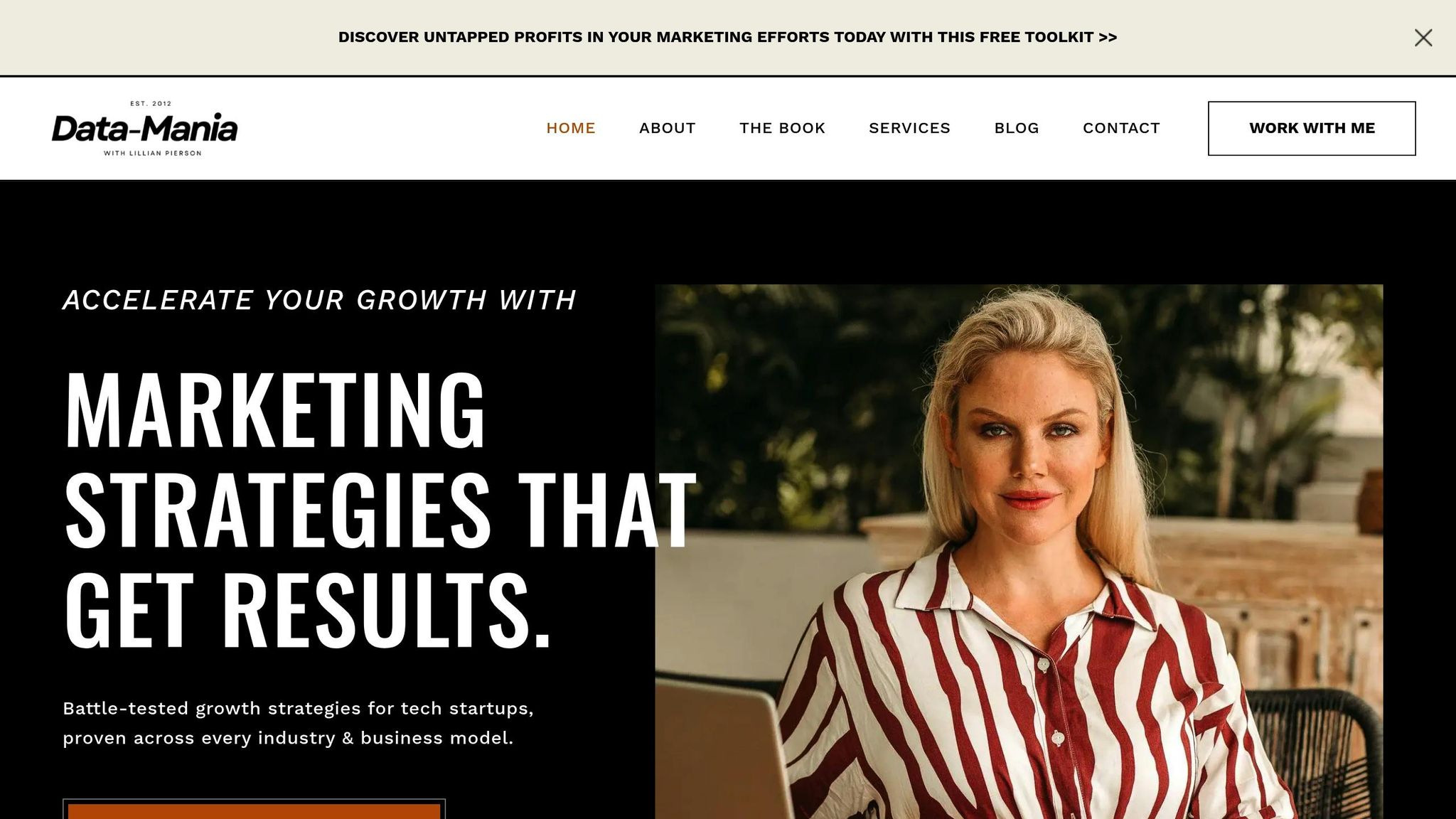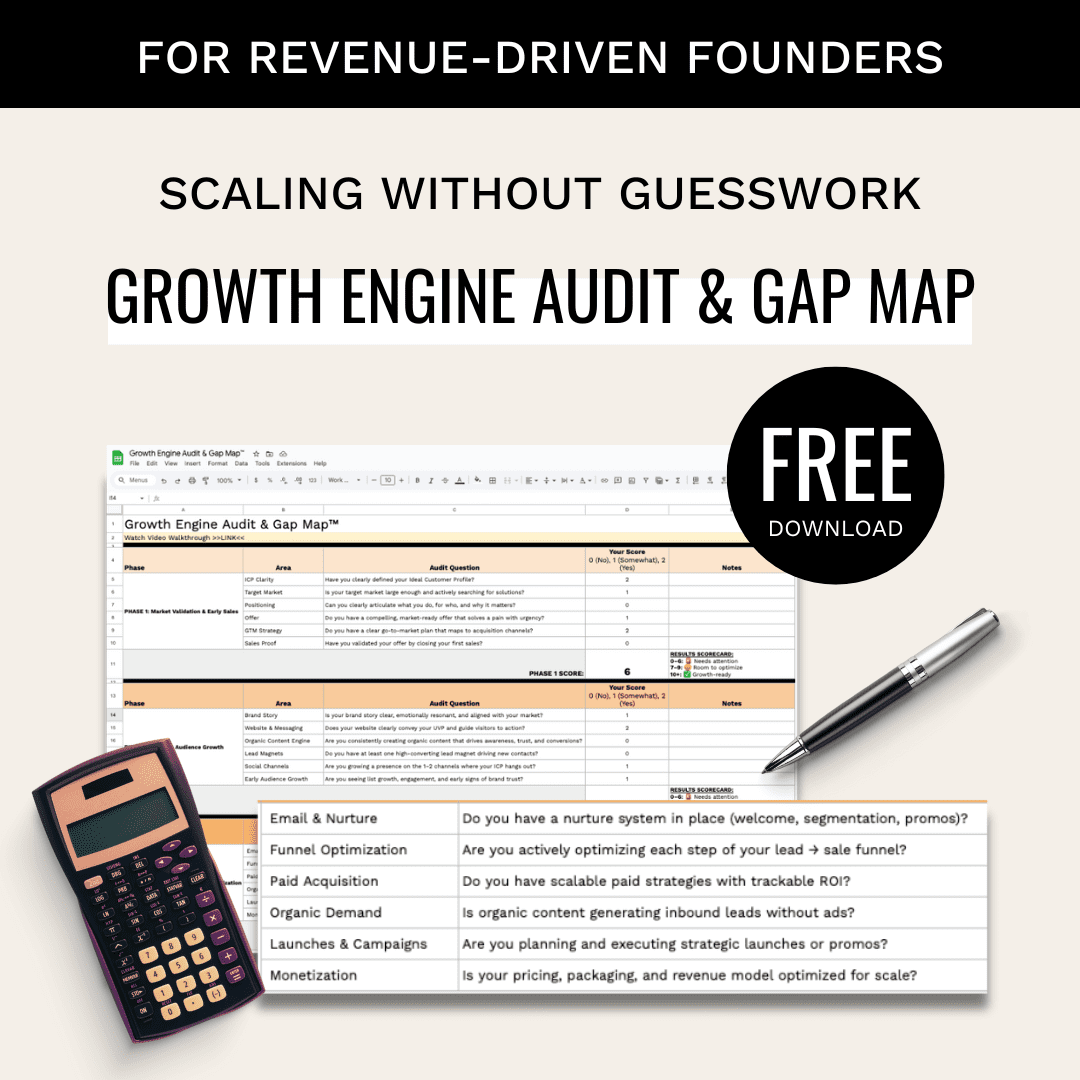AI is transforming growth marketing by helping businesses predict outcomes, optimize strategies, and improve results. Here’s how AI is being used in marketing today:
- Customer Behavior Forecasting: Predict customer lifetime value, detect churn risk, and improve retention with data-driven insights.
- Sales and Revenue Predictions: Analyze sales trends, market segments, and revenue forecasts to allocate resources effectively.
- Content Performance Forecasting: Predict content success, optimize posting schedules, and measure ROI for smarter content strategies.
- Marketing Campaign Forecasting: Analyze channel performance, adjust budgets in real-time, and maximize ad spend efficiency.
With AI, marketers can make smarter decisions, reduce costs, and achieve better results across channels and campaigns.
How Predictive Analytics and Generative AI Help You …
AI for Customer Behavior Forecasting
AI has changed the way businesses predict and understand customer actions. By analyzing behavioral data, companies can make smarter decisions in areas like customer value estimation and churn prevention.
Customer Lifetime Value Predictions
AI models can predict customer lifetime value (CLV) by analyzing factors like purchase history, engagement levels, and demographics. This helps businesses identify their most valuable customers and allocate resources more effectively. Key data points include purchase frequency, average order value, seasonal buying patterns, and how customers respond to campaigns.
Churn Risk Detection
AI doesn’t just help identify valuable customers – it also flags those at risk of leaving. By tracking customer behavior, AI can spot early warning signs of churn. These might include less frequent purchases, reduced product usage, negative interactions with customer support, changes in browsing patterns, or declining engagement with marketing efforts.
Customer Insights Example
Here’s a real-world example: A B2B software company used AI to analyze user engagement, support ticket trends, and product usage. This allowed them to spot early signs of churn. With this information, they implemented tailored outreach efforts, leading to better customer retention and satisfaction.
Sales and Revenue Predictions
AI-driven tools are changing how businesses forecast sales and revenue. By analyzing key data points with advanced algorithms, companies can fine-tune strategies and make projections with greater accuracy. Let’s dive into how AI enhances sales trend analysis and evaluates market segment performance.
Sales Trend Analysis
AI systems dig deep into historical sales data, market indicators, and external influences to uncover patterns that traditional methods might miss. This allows businesses to spot subtle connections between metrics and sales outcomes, leading to smarter decisions. It also helps pinpoint performance differences across various market segments.
"Since March, I closed 15 contracts valued at $310K. I also pre-sold $60K worth of annual contracts for my SaaS company. 67% has been pure profit." – Kam Lee, Founder, Finetooth Analytics
Market Segment Performance
AI is particularly effective in breaking down markets and predicting how different customer groups will perform. It can:
- Identify promising market segments
- Monitor growth trends specific to each segment
- Anticipate how segments will respond to marketing efforts
- Adjust pricing strategies to suit individual segments
"In data & AI, it is a rare find to come across someone as dedicated and adept as Lillian Pierson. Her partnership with us has been nothing short of transformative. Her approach is characterized by a genuine curiosity and a commitment to understanding every facet of our brand. This has enabled her to craft strategies that are not only effective in bringing our product to market but also in ensuring that it resonates with our target audience. We are immensely grateful for her unwavering support and are privileged to have her as our partner." – Matt Brown, Head of Global Growth, Single Store
Sales Forecast Results
Using these insights, AI-powered forecasting enables companies to predict revenue more precisely and spot new opportunities. This better understanding helps businesses allocate resources effectively and adjust strategies as needed.
"Through Lillian’s service, we got incredible value. More specifically, her outreach delivered over 1 million views and 45,000 engagements in 3 months. We hope to bring her on again for next year’s campaign." – Kevin Allen, Manager, IBM Developer Content Acquisition, IBM
sbb-itb-e8c8399
Content Performance Forecasting
Measuring Content Success
AI tools use historical engagement data to predict how content will perform in the future. They analyze a variety of factors, such as view duration, social shares, conversion rates, and audience demographics. This helps create a clearer picture of what content is likely to succeed.
AI tools focus on:
- Engagement trends across different formats
- Audience behavior by segment
- Platform-specific performance indicators
- Seasonal patterns that influence visibility
- Topic relevance to current interests
This information also helps determine the best times to release content for maximum impact.
Planning Content Schedules
AI-based scheduling tools help identify the best times to share content by analyzing when audiences are most active and engaged. By reviewing past engagement data, these tools pinpoint the ideal windows for posting.
Key considerations for scheduling include:
- Audience time zones and their distribution
- Best posting times for each platform
- Competitor activity and timing
- Global timing for diverse audiences
Measuring Content ROI
When success metrics and scheduling insights are combined, teams can create a focused content strategy that delivers measurable results. AI tools make it easier to prioritize high-impact topics and formats by analyzing patterns from previously successful content.
Here’s how AI forecasting improves results:
-
Boosting Engagement
- Longer time spent on pages
- More social shares
- Increased conversations and comments
-
Smarter Resource Use
- Streamlined production processes
- Better topic and format choices
- Efficient use of team resources
-
Tracking and Improving Performance
- Enhanced success predictions
- Clearer ROI measurement
Marketing Campaign Forecasting
AI takes campaign strategies to the next level by analyzing historical data and market trends to predict outcomes and improve decision-making.
Channel Performance Analysis
By examining data like conversion rates, acquisition costs, engagement levels, and attribution models, AI pinpoints which channels deliver the best results. This helps marketers predict which platforms will work best for specific goals and audiences.
Budget Distribution Updates
AI tools monitor campaign performance in real time, shifting budgets where needed. They flag underperforming areas and highlight where growth is possible, ensuring resources are used effectively across channels.
Ad Spend Results
AI fine-tunes ad spend by tracking key metrics, adjusting bids, refining audience segments based on response data, and testing different creatives. This approach helps maximize return on ad spend (ROAS) while keeping campaigns efficient and scalable.
These forecasting tools make campaign planning more strategic, spending smarter, targeting sharper, and scaling smoother.
Data-Mania Services Overview

Data-Mania specializes in AI-driven marketing strategies tailored for technology companies, leveraging AI forecasting to fuel growth and improve outcomes.
Marketing Support for Tech Companies
Data-Mania offers consulting services designed for AI startups, SaaS businesses, and tech firms. Their achievements include scaling top-of-funnel channels from zero to about 750,000 users and working with 10% of Fortune 100 companies.
Fractional CMO Services
The Fractional CMO service provides executive-level marketing leadership without the expense of a full-time hire. Here’s what’s included:
| Service Component | Description |
|---|---|
| Strategy Development | Tailored growth and go-to-market strategies |
| Performance Monitoring | Tracking and improving key metrics |
| Team Leadership | Guidance and development for marketing teams |
| Vendor Management | Coordination with agencies and partners |
This service is best suited for companies with annual marketing budgets of over $1 million (excluding team costs). Data-Mania also offers additional tools and resources to help clients make informed decisions.
AI Marketing Resources
To support tech companies, Data-Mania provides a range of marketing materials powered by AI, including:
- A toolkit to turn marketing challenges into growth opportunities
- Blog posts covering the latest AI marketing trends
- Newsletters on advancements in technology
- Detailed guides focused on data-driven marketing strategies
"We are building a very powerful spreadsheet product and we partnered with Lillian to get that product to market. As a technical founder, I was pretty naive around what it really would take to get a big product to market. Working with Lillian was really, really, a critical part of us getting to the next level in our business. I would definitely recommend working with her." – Tony Garvan, Founder & CEO of SheetRocks
Looking Ahead: AI Marketing Trends
The role of AI in marketing is evolving, with exciting advancements in forecasting and integration. Building on earlier discussions, these developments expand the reach of AI-driven strategies.
Predictive Analytics Growth
AI forecasting tools are improving in accuracy and usability. They now analyze unstructured data more effectively and include diverse inputs like social sentiment, visual content, and voice interactions to refine predictions.
Real-time Adjustments
AI systems now provide insights and recommendations instantly, enabling quick campaign adjustments and smarter decisions in real time.
Integrated Cross-channel Forecasting
New AI marketing platforms unify channels for more cohesive forecasting. Here’s how they enhance different areas:
| Channel Type | Forecasting Capabilities |
|---|---|
| Social Media | Predicts engagement and optimizes post timing |
| Email Marketing | Improves open rates and boosts conversions |
| Paid Advertising | Allocates budgets and projects ROI |
| Content Marketing | Identifies trending topics and audience response |
Privacy-focused Approaches
With stricter privacy laws and the decline of third-party cookies, AI tools now prioritize first-party data. This shift encourages the development of privacy-compliant predictive models.
Smarter Decision Automation
Next-gen AI tools are automating routine decisions while offering clear explanations. This allows marketing teams to dedicate more time to strategic planning and creative work.
These trends build on existing AI applications, paving the way for more dynamic and accessible data-driven marketing. As these tools evolve, they promise to make growth marketing and performance forecasting even more effective.
Related posts
- AI Agents in Marketing: The Secret to Driving 10x Engagement & Conversions
- 5 Ways AI Can Optimize Marketing ROI for your Tech Startup
- Real-Time ROI Forecasting with AI: How It Works




